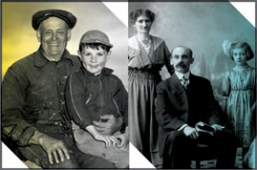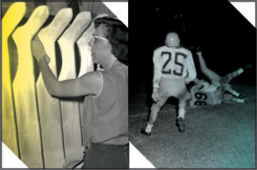Due to the setup for the Noon Hour Concert, the Fourth Floor at Central Library will be closed on Friday, January 2. Makerspace and Newcomer Learning Centre will remain open. Floors 1-3 have spaces to work and study.
All branches close on Sunday, December 21, 2025. This includes branches with Extended Access.
All branches close on December 25 and 26 for Christmas and Boxing Day. This includes branches with Extended Access.
All branches close on Sunday, December 28, 2025. This includes branches with Extended Access.
All branches close on Thursday January 1 for New Years Day. This includes branches with Extended Access.
Branch Study Halls are paused Friday, December 19, 2025 through Monday, January 5, 2026. Central Library Study Hall hours resume Spring 2026.
www.hpl.ca/study-halls
Please note that the 905-546-3200 main line is experiencing technical issues today, Monday, December 8. Members can still reach Staff at 289-779-7588 or by email or through chat online. We are working quickly to resolve the issue. Thank you for your patience.
Bring back your borrowed library items (due Oct 1 or later) within 28 days to avoid a replacement or lost fee. We'll remove the fee when you bring back your overdue items.
Historical Ancaster
Established in 1792, Ancaster was briefly known as Wilson’s Mills, after James Wilson who had established a saw and gristmill there. The location was ideal as the Mohawk Road was in existence and at the time was one of the major transportation routes in Upper Canada, connecting the Niagara Peninsula with the northern interior. The following year, the community came to be known as the Township of Ancaster, taking its name from Ancaster, a community located south of the city of Lincoln in the Lincolnshire District of England. The Township of Ancaster became a part of Wentworth County in 1816.
Located beside the natural break in the Niagara Escarpment, and beside a significant creek flowing over it, the police village of Ancaster became the location of a large number of mills that took advantage of the available waterpower. When the government of Upper Canada decided that its capital, Newark (now known as Niagara-on-the-Lake) was located too close to the American border, the choice for the new capital was between Ancaster and York (now Toronto). Ancaster’s pre-eminence at the Head of Lake Ontario region began to decline with the opening of the Burlington Canal, connecting Hamilton Harbour with Lake Ontario, in the 1820’s. Among other factors, competition with the Town of Dundas whose location was on more favourable transportation routes (York Road, Governor’s Road, etc.) led to Ancaster’s dominant commercial position in the area.
By the mid-19th century, the City of Hamilton had attained the dominant position among municipalities and Ancaster was a relative stable, if not declining, community in terms of population, economic activity etc. With the construction of the Hamilton and Brantford Electric Railway reached as far as Ancaster in 1907, the character of the village started to change. More and more Hamilton businessmen found it convenient to work in the city’s downtown core, commuting back and forth to their homes in the expanding residential surveys in Ancaster. At the same time, the Hamilton Golf and Country Club relocated from its course in the west end of the city (now Chedoke Golf Course). Internationally famous golf course designer H.S. Colt laid out the Ancaster location for the Hamilton Golf and Country Club. It remains one of Ontario’s and Canada’s finest golf courses.
In 1973 Bill 155 created the Regional Municipality of Hamilton-Wentworth. As of January 1, 1974, the predominately rural Township of Ancaster as well as the village of Ancaster itself became known as the Town of Ancaster. On January 1, 2002, the Town of Ancaster was amalgamated with several other communities to form the City of Hamilton. Although the formal end of the municipal body known as the Town of Ancaster happened at that time, Ancaster retains a strong community identity and pride. Its history, traditions and location remain as vital components of the new city’s community of communities.
















